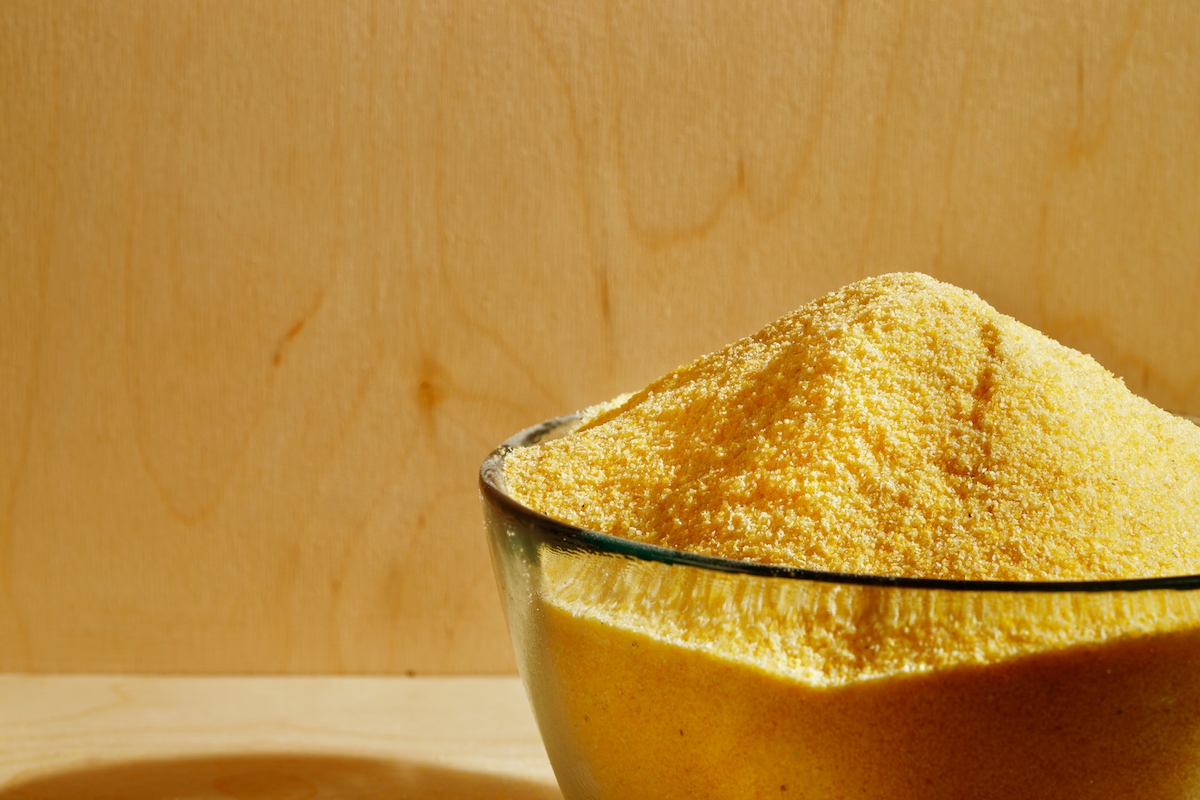In Caribbean restaurants across America, patrons have become accustomed to common dishes such as jerk chicken, beef patties, and oxtail. The heat and vibrance of Caribbean food has made a splash stateside, but some of the more home-style, foundational dishes are still struggling to gain attention in the restaurant space.
Fungi — pronounced "foon-ji," with no relation to mushrooms — is one of them. A staple Caribbean cornmeal dish flaked with okra and laced with butter can be found throughout the islands, particularly in the West Indies and Virgin Islands. The thickened, earthy porridge-like dish has roots in slavery itself, and is one of many dishes that demonstrates the importance of cornmeal in Caribbean foodways.
A staple with pseudonyms
Ramin Ganeshram, a journalist, food writer, trained chef, and executive director of Connecticut's Westport Museum for History and Culture, explains, "We call [fungi] cou cou [sometimes written as "coo coo"] in Trinidad, and it's called different things in different parts of the Caribbean."
Ganeshram is a multiracial American with Trinidadian heritage who has spent her career focusing on the colonial and early federal foodways of African Americans and mixed race people, with a focus in the Caribbean. (She also authored a book about Hercules, George Washington's enslaved, talented Black chef).
She explained that cornmeal-based fungi takes a variety of shapes across the Caribbean community. Her first memory eating the cornmeal is the way it's still cooked in Trinidad: with okra. It's molded into a cake-like or molded figure or some sort, then sliced and eaten with any kind of stewed dish.
"Corntastic" cornmeal
Ganeshram went on to say that cornmeal itself makes cameos in various guises throughout the Caribbean, and that the diversity of cooked cornmeal shows the range of Caribbean foodways. Beyond fungi and cou cou, it's also used for pastelles, which are similar to tamales stuffed with seasoned meats, wrapped in banana leaves, and steamed. (Tamales and pastelles are different from Puerto Rican pasteles, which have a plantain–green banana mash base.) On the islands, it's also common to see cornmeal combined with flour to make Caribbean dumplings.
"The Caribbean is often seen as this monolith to Americans," says Ganeshram. "They assume that Caribbean food is the same, and all Caribbean accents are the same, and yet we see these incredible distinctions from island to island."
Queens native Brittney "Stikxz" Williams agrees. The private chef and caterer describes fungi as something that's more prevalent in the Virgin Islands and Barbados. In her Jamaican household growing up, however, her family ate cornmeal in the form of a slightly sweetened porridge. The chef recalls learning as a young girl that the porridge had been considered a form of sustenance for generations.
"It was something that was always eaten for breakfast to sustain [you] hunger, especially for those growing up on farmland [who] were responsible for attending to the land," she said.
Ganeshram says this can be traced to slavery. During the Transatlantic Slave Trade, Africans who were brought to the Central American islands introduced cornmeal-based dishes such as fungi. These dishes–and Caribbean food in general–were deemed "poor man's food": food that could keep physical laborers moving at an inexpensive price.
A cuisine beyond jerk chicken
Recognizing the more unassuming dishes within Caribbean cuisine gives people the opportunity to taste essential Caribbean history and culture, says Ganeshram, who has tried for years to shift the narrative about what island cuisine is about.
"The foodways are a way to get to that story, and get to that truth, and get to that centuries-long, systemic oppression in a way that people can quite literally digest," she says.
Chef Williams is likewise eager to bring fungi and similar cornmeal dishes to the Caribbean cuisine story, saying that it's rarely given full attention and credit in restaurant settings. She's tried to counter the idea that cornmeal can't be used in creative or refined Caribbean dining (polenta, for example, appears on some of the finest Italian menus in the country), and incorporates cornmeal in her menus.
"I love to introduce cornmeal at my dinners whenever I [have] multiple courses, or anything of that sort, because I want everyone to really understand the gravity [of cornmeal] and how impactful each of these specific ingredients hold true to West Indian culture, and to the Caribbean diaspora," said Williams.
Ganeshram applauded efforts from culinary figures like chef Williams to help the kaleidoscope of Caribbean cuisine attain the same level of respect as other, more Eurocentric cuisines. (What is polenta, after all, if not Italy's version of fungi?)
"I've been writing about this food for 20 years," said Ganeshram. "My struggle, as a person of Caribbean descent, who's a chef and a food writer, is that I've spent literally decades trying to convince editors that Caribbean food is valuable, that people care about it, that it's interesting, and that it's delicious."


Shares